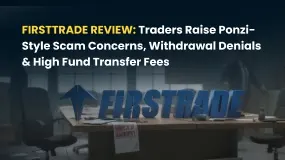简体中文
繁體中文
English
Pусский
日本語
ภาษาไทย
Tiếng Việt
Bahasa Indonesia
Español
हिन्दी
Filippiiniläinen
Français
Deutsch
Português
Türkçe
한국어
العربية
Are You Still Watching? Netflix Lays Off Staff as Subscriber Numbers Fall
Abstract:Netflix is letting go of 300 employees, barely a month after its last round of layoffs.

Where Netflix was once king of streaming services, the company is struggling to stay afloat in a sea of competition. This is most evident from a series of recent layoffs after dwindling growth.
On Thursday, Variety broke the story that Netflix was letting go of ~300 employees, barely a month after its last round of layoffs impacting 150 people. While figures vary, Statista reports that by the end of 2021, Netflix had 11,300 full-time employees (globally) – an increase of 20% YoY from the previous year – unsurprising considering its surge during the pandemic that cemented its place among the booming stay-at-home stocks.
Netflix saw out 2020 with a 66% gain from January. In the first half of the year, they added ~26 million new subscribers*, and surpassed the 200 million mark (total) in Q4. Amazon also greatly benefitted from the stay-at-home order, and while Prime Video may not necessarily have been the primary contributor to its success, shares were up close to 70% for the same period. By comparison, The Walt Disney Co, which had launched its streaming platform, Disney+ just a year before but lost revenue from its parks, gift shops, and cruises, climbed a modest 22%.
Despite continued growth, posting a YoY increase in both revenue and subscriber numbers during 2021, Netflix projected slower growth for 2022. In their analyst call after posting Q4‘s results, the company said it anticipated “only” 2.5 million new members in the first quarter of this year. In April’s Q1 report, the company instead posted a loss of 200k subscribers – its first decline in paid user numbers in a decade. Profit came in at half of what itd been for the same period the previous year, while revenue was up almost 10%.
The shock result sent shares falling 35% in the next trading session, subsequently wiping $50 billion off of its market cap. The company went on to warn that they expected a further loss of 2 million subscribers over Q2.
After hiking up prices twice since the start of 2021 (in the UK, with the most recent being in March, amidst a cost-of-living crisis), and talk of ad-supported tiers being introduced as early as Q4, subscribers aren‘t happy. While public opinion puts the switch down to there simply being better content elsewhere, and many of their most popular series not being renewed, Netflix has differing opinions. Much of the decline is attributed to password-sharing, with them estimating that 100 million more households are accessing its service for free. To tackle this, Netflix is trialling a crackdown in Chile, Peru, and Costa Rica in which they notify and then charge users for any sub-accounts (i.e., accounts being accessed in different households). This sharing strategy certainly comes with its own hurdles, but it’s still too early to tell how (and if) itd work on a larger scale.
Year-to-date, Netflix shares are down almost 69%**. The company is expected to post their second quarter results on July 19th. Could Stranger Things‘ fourth season, accumulating 5 billion minutes of watch time in its first week alone be enough to change Netflix’s current trajectory, or is it only going to get worse from here? Well have to tune in next month to see.
Spread bets and CFDs are complex instruments and come with a high risk of losing money rapidly due to leverage. 73.85% of retail investor accounts lose money when spread betting or trading CFDs with OvalX. You should consider whether you understand how spread bets or CFDs work and whether you can afford to take the high risk of losing your money.

Disclaimer:
The views in this article only represent the author's personal views, and do not constitute investment advice on this platform. This platform does not guarantee the accuracy, completeness and timeliness of the information in the article, and will not be liable for any loss caused by the use of or reliance on the information in the article.
Read more

Firsttrade Review: Traders Raise Ponzi-Style Scam Concerns, Withdrawal Denials & More Issues
Have you lost all your capital while trading via Firsttrade? Does the US-based forex broker disallow you from withdrawing funds? Do you have to pay massive fees when transferring funds? Does your trade get affected because of frequent malfunction in the trading app? These have been haunting many traders at Firsttrade. Consequently, many of them have raised complaints online. In this Firsttrade review, we have shared such complaints. Keep reading to know about them.

Defcofx Review: Spread Manipulation & Poor Customer Support Outrage Traders
Does the poor customer support service leave you stunned when trading via Defcofx? Do you receive blunt, negative responses from the support team on several trading queries? Does the Saint Lucia-based forex broker pile on the losses for you by manipulating forex spread charges? In this Defcofx review, we have shared some complaints made against the broker. This will further answer your question: Is Defcofx real or fake?

Beware the “Ghost Brokers” This Halloween — Trade Safely with WikiFX
Stay safe this Halloween! Spot and avoid ghost brokers in the forex world with WikiFX – your trusted tool for verifying broker legitimacy.

FP Markets Social Trading Expands Global Access
FP Markets Social Trading connects traders worldwide, offering copy trading, Forex strategies, and expert insights across global markets.
WikiFX Broker
Latest News
Ponzi Scheme Operator Sentenced to 14 Years in Western Australia
Chicago PMI Beats But Remains In 'Contraction' For Second Straught Year
How to Add and Take Out Money from Amillex Broker: A Complete Guide
T4Trade broker Review 2025: Is T4Trade Regulated?
FCA warning: These Firms are on the list
Don’t Get Scammed: A Roundup of Common Online Fraud Tactics in Forex
Dubai VARA Warns Against Vesta Investments
Firsttrade Review: Traders Raise Ponzi-Style Scam Concerns, Withdrawal Denials & More Issues
Voices of the Golden Insight Award Jury | David Bily, Founder and CEO of Moneta Markets
Spot the Ghost Brokers This Halloween | No Treats for Scams!
Currency Calculator



